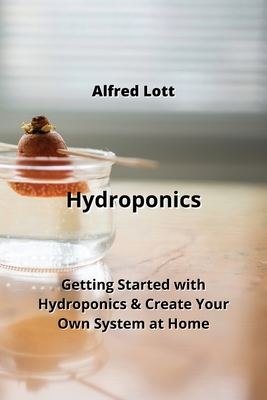You are here
Back to topHydroponics: Getting Started with Hydroponics & Create Your Own System at Home (Paperback)
Description
Hydroponics is a fascinating and innovative way of growing plants without soil, using nutrient-rich water instead. Whether you're a seasoned gardener looking to explore a new cultivation method or a beginner interested in a sustainable and space-saving gardening solution, getting started with hydroponics is an exciting endeavor. In this guide, we'll walk you through the essential steps to create your own hydroponic system at home, allowing you to grow a wide variety of plants with efficiency and precision.
Step 1: Understand the Basics
Before diving into hydroponics, it's crucial to grasp the fundamentals. Learn about the different types of hydroponic systems, such as deep water culture, nutrient film technique, and drip systems. Understand how these systems work and decide which one suits your needs and available space.
Step 2: Gather Your Supplies
To start your hydroponic journey, you'll need specific supplies, including a container or reservoir, growing medium, nutrient solution, pH and EC meters, pumps, and grow lights (if growing indoors). Invest in high-quality equipment to ensure the success of your hydroponic system.
Step 3: Choose Your Plants
Select the plants you want to grow hydroponically. While most plants can thrive in hydroponic systems, some, like lettuce, herbs, tomatoes, and peppers, are particularly well-suited. Research the specific requirements of your chosen plants to provide them with the best growing conditions.
Step 4: Set Up Your System
Follow the instructions for your chosen hydroponic system to assemble it correctly. Ensure that it is securely positioned and has access to an appropriate light source if you're growing indoors. Fill the reservoir with the nutrient solution according to the manufacturer's guidelines.
Step 5: Monitor pH and EC Levels
Regularly check the pH and electrical conductivity (EC) levels of your nutrient solution. Maintaining the correct pH (usually around 5.5 to 6.5) and EC levels ensures that your plants receive the right nutrients in the right concentrations.
Step 6: Maintain Nutrient Solution and Water Levels
Regularly top up your reservoir with fresh water to replace any water lost through evaporation or plant uptake. Adjust the nutrient solution as needed to maintain optimal nutrient concentrations.
Step 7: Monitor Plant Health
Keep a close eye on your plants for signs of stress, nutrient deficiencies, or pests. Hydroponically grown plants are susceptible to different issues than soil-grown ones, so proactive monitoring is essential.
Step 8: Harvest and Enjoy
Once your plants have reached maturity, it's time to harvest and enjoy the fruits of your hydroponic gardening labor. Hydroponically grown produce is often known for its exceptional quality and taste.
Conclusion:
Starting your hydroponic system at home is an exciting and rewarding endeavor. By understanding the basics, choosing the right plants, and diligently maintaining your system, you can enjoy a consistent supply of fresh and healthy produce year-round. Whether you're interested in indoor gardening or maximizing limited outdoor space, hydroponics offers a sustainable and efficient way to cultivate a wide variety of plants with great success. Get started today and embark on your journey to becoming a skilled hydroponic gardener.

